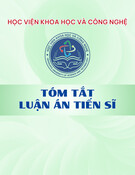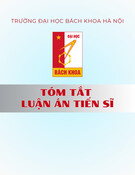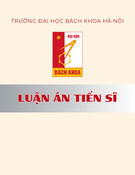
Annals of Mathematics
Invariant measures and
the set of exceptions to
Littlewood’s conjecture
By Manfred Einsiedler, Anatole Katok, and Elon
Lindenstrauss*

Annals of Mathematics,164 (2006), 513–560
Invariant measures and the set of
exceptions to Littlewood’s conjecture
By Manfred Einsiedler, Anatole Katok, and Elon Lindenstrauss*
Abstract
We classify the measures on SL(k, R)/SL(k, Z) which are invariant and
ergodic under the action of the group Aof positive diagonal matrices with pos-
itive entropy. We apply this to prove that the set of exceptions to Littlewood’s
conjecture has Hausdorff dimension zero.
1. Introduction
1.1. Number theory and dynamics. There is a long and rich tradition of
applying dynamical methods to number theory. In many of these applications,
a key role is played by the space SL(k, R)/SL(k, Z) which can be identified as
the space of unimodular lattices in Rk. Any subgroup H<SL(k, R) acts on
this space in a natural way, and the dynamical properties of such actions often
have deep number theoretical implications.
A significant landmark in this direction is the solution by G. A. Margulis
[23] of the long-standing Oppenheim Conjecture through the study of the ac-
tion of a certain subgroup Hon the space of unimodular lattices in three space.
This conjecture, posed by A. Oppenheim in 1929, deals with density properties
of the values of indefinite quadratic forms in three or more variables. So far
there is no proof known of this result in its entirety which avoids the use of
dynamics of homogeneous actions.
An important property of the acting group Hin the case of the Oppenheim
Conjecture is that it is generated by unipotents: i.e. by elements of SL(k, R)
all of whose eigenvalues are 1. The dynamical result proved by Margulis was
a special case of a conjecture of M. S. Raghunathan regarding the actions
*A.K. was partially supported by NSF grant DMS-007133. E.L. was partially supported
by NSF grants DMS-0140497 and DMS-0434403. Part of the research was conducted while
E.L. was a Clay Mathematics Institute Long Term Prize fellow. Visits of A.K. and E.L. to
the University of Washington were supported by the American Institute of Mathematics and
NSF Grant DMS-0222452.

514 MANFRED EINSIEDLER, ANATOLE KATOK, AND ELON LINDENSTRAUSS
of general unipotents groups. This conjecture (and related conjectures made
shortly thereafter) state that for the action of Hgenerated by unipotents by
left translations on the homogeneous space G/Γ of an arbitrary connected
Lie group Gby a lattice Γ, the only possible H-orbit closures and H-ergodic
probability measures are of an algebraic type. Raghunatan’s conjecture was
proved in full generality by M. Ratner in a landmark series of papers ([41], [42]
and others; see also the expository papers [40], [43], and the book [28]) which
led to numerous applications; in particular, we use Ratner’s work heavily in
this paper. Ratner’s theorems provide the model for the global orbit structure
for systems with parabolic behavior. See [8] for a general discussion of principal
types of orbit behavior in dynamics.
1.2. Weyl chamber flow and Diophantine approximation. In this paper
we deal with a different homogeneous action, which is not so well understood,
namely the action by left multiplication of the group Aof positive diagonal
k×kmatrices on SL(k, R)/SL(k, Z); Ais a split Cartan subgroup of SL(k, R)
and the action of Ais also known as a particular case of a Weyl chamber
flow [16].
For k= 2 the acting group is isomorphic to Rand the Weyl chamber
flow reduces to the geodesic flow on a surface of constant negative curvature,
namely the modular surface. This flow has hyperbolic structure; it is Anosov
if one makes minor allowances for noncompactness and elliptic points. The
orbit structure of such flows is well understood; in particular there is a great
variety of invariant ergodic measures and orbit closures. For k>2, the Weyl
chamber flow is hyperbolic as an Rk−1-action, i.e. transversally to the orbits.
Such actions are very different from Anosov flows and display many rigidity
properties; see e.g. [16], [15]. One of the manifestations of rigidity concerns
invariant measures. Notice that one–parameter subgroups of the Weyl chamber
flow are partially hyperbolic and each such subgroup still has many invariant
measures. However, it is conjectured that A-ergodic measures are rare:
Conjecture 1.1 (Margulis).Let µbe an A-invariant and ergodic prob-
ability measure on X= SL(k, R)/SL(k, Z)for k≥3. Then µis algebraic;i.e.
there is a closed,connected group L>Aso that µis the L-invariant measure
on a single,closed L-orbit.
This conjecture is a special case of much more general conjectures in this
direction by Margulis [25], and by A. Katok and R. Spatzier [17]. This type
of behavior was first observed by Furstenberg [6] for the action of the multi-
plicative semigroup Σm,n =mknlk,l≥1on R/Z, where n, m are two multi-
plicatively independent integers (i.e. not powers of the same integer), and the
action is given by k.x =kx mod 1 for any k∈Σm,n and x∈R/Z. Under
these assumptions Furstenberg proved that the only infinite closed invariant

THE SET OF EXCEPTIONS TO LITTLEWOOD’S CONJECTURE 515
set under the action of this semigroup is the space R/Zitself. He also raised
the question of extensions, in particular to the measure theoretic analog as
well as to the locally homogeneous context.
There is an intrinsic difference regarding the classification of invariant
measures between Weyl chamber flows (e.g. higher rank Cartan actions) and
unipotent actions. For unipotent actions, every element of the action already
acts in a rigid manner. For Cartan actions, there is no rigidity for the action of
individual elements, but only for the full action. In stark contrast to unipotent
actions, M. Rees [44], [3, §9] has shown there are lattices Γ <SL(k, R) for
which there are nonalgebraic A-invariant and ergodic probability measures on
X= SL(k, R)/Γ (fortunately, this does not happen for Γ = SL(k, Z), see [21],
[25] and more generally [48] for related results). These nonalgebraic measures
arise precisely because one-parameter subactions are not rigid, and come from
Ainvariant homogeneous subspaces which have algebraic factors on which the
action degenerates to a one-parameter action.
While Conjecture 1.1 is a special case of the general question about the
structure of invariant measures for higher rank hyperbolic homogeneous ac-
tions, it is of particular interest in view of number theoretic consequences. In
particular, it implies the following well-known and long-standing conjecture of
Littlewood [24, §2]:
Conjecture 1.2 (Littlewood (c. 1930)).For every u, v ∈R,
lim inf
n→∞ nnunv=0,(1.1)
where w= minn∈
Z
|w−n|is the distance of w∈Rto the nearest integer.
In this paper we prove the following partial result towards Conjecture 1.1
which has implications toward Littlewood’s conjecture:
Theorem 1.3. Let µbe an A-invariant and ergodic measure on X=
SL(k, R)/SL(k, Z)for k≥3. Assume that there is some one-parameter sub-
group of Awhich acts on Xwith positive entropy. Then µis algebraic.
In [21] a complete classification of the possible algebraic µis given. In
particular, we have the following:
Corollary 1.4. Let µbe as in Theorem 1.3. Then µis not compactly
supported. Furthermore,if kis prime,µis the unique SL(k, R)-invariant mea-
sure on X.
Theorem 1.3 and its corollary have the following implication toward
Littlewood’s conjecture:

516 MANFRED EINSIEDLER, ANATOLE KATOK, AND ELON LINDENSTRAUSS
Theorem 1.5. Let
Ξ=(u, v)∈R2: lim inf
n→∞ nnunv>0.
Then the Hausdorff dimension dimHΞ=0. In fact,Ξis a countable union of
compact sets with box dimension zero.
J. W. S. Cassels and H. P. F. Swinnerton-Dyer [1] showed that (1.1) holds
for any u, v which are from the same cubic number field (i.e. any field Kwith
degree [K:Q] = 3).
It is easy to see that for a.e. (u, v) equation (1.1) holds — indeed, for
almost every uit is already true that lim infn→∞ nnu= 0. However, there
is a set of uof Hausdorff dimension 1 for which lim infn→∞ nnu>0; such u
are said to be badly approximable. Pollington and Velani [35] showed that for
every u∈R, the intersection of the set
{v∈R:(u, v) satisfies (1.1)}(1.2)
with the set of badly approximable numbers has Hausdorff dimension one.
Note that this fact is an immediate corollary of our Theorem 1.5 — indeed,
Theorem 1.5 implies in particular that the complement of this set (1.2) has
Hausdorff dimension zero for all u. We remark that the proof of Pollington
and Velani is effective.
Littlewood’s conjecture is a special case of a more general question. More
generally, for any klinear forms mi(x1,x
2,...,x
k)=k
j=1 mijxj, one may
consider the product
fm(x1,x
2,...,x
k)=
k
i=1
mi(x1,...,x
k),
where m=(mij) denotes the k×kmatrix whose rows are the linear forms
above. Using Theorem 1.3 we prove the following:
Theorem 1.6. There is a set Ξk⊂SL(k, R)of Hausdorff dimension k−1
so that for every m∈SL(k, R)\Ξk,
inf
x∈
Z
k\{0}|fm(x)|=0.(1.3)
Indeed,this set Ξkis A-invariant,and has zero Hausdorff dimension transver-
sally to the A-orbits.
For more details, see Section 10 and Section 11. Note that (1.3) is auto-
matically satisfied if zero is attained by fmevaluated on Zk\{0}.
We also want to mention another application of our results due to Hee Oh
[32], which is related to the following conjecture of Margulis:


























